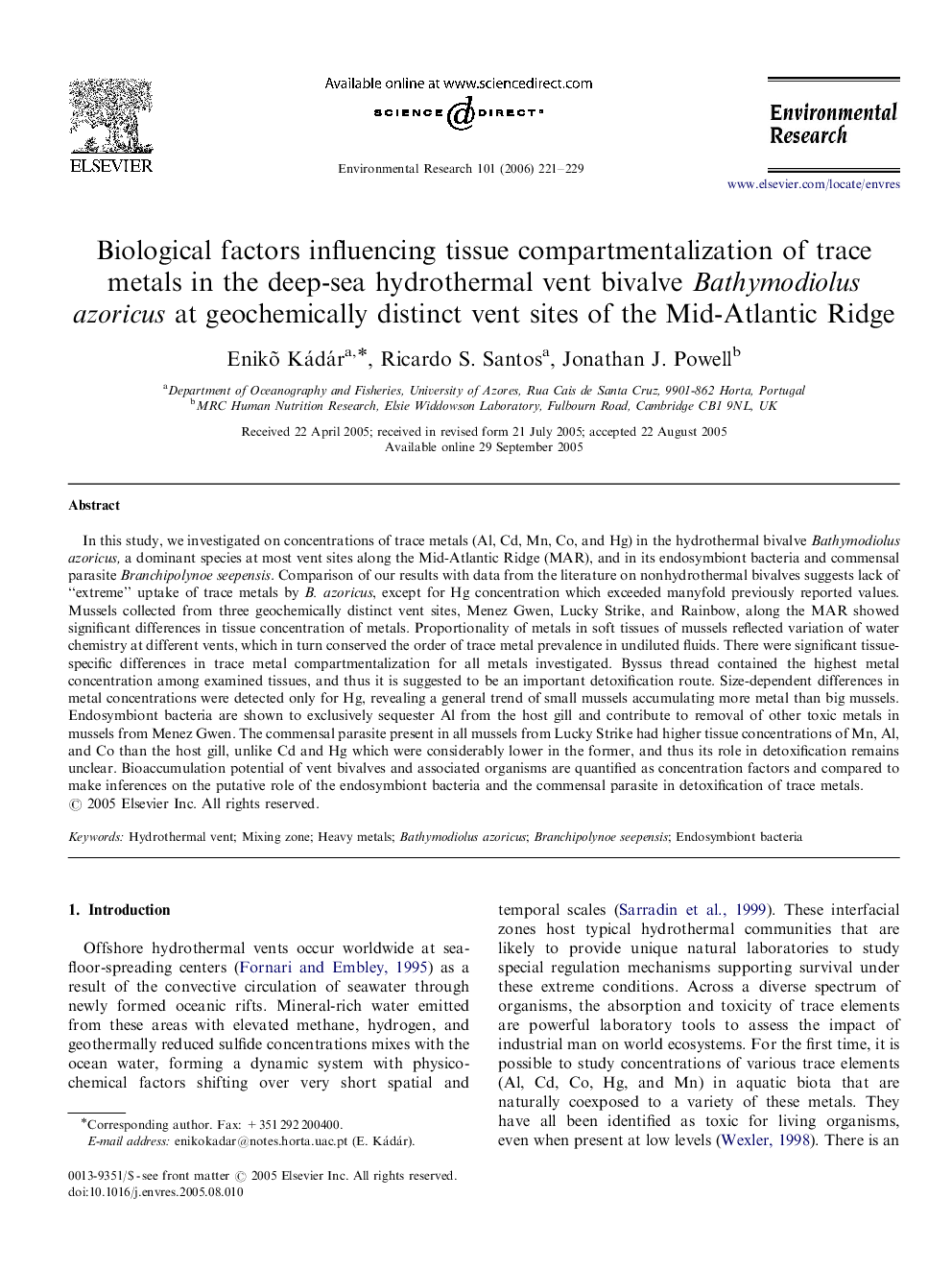| کد مقاله | کد نشریه | سال انتشار | مقاله انگلیسی | نسخه تمام متن |
|---|---|---|---|---|
| 4471026 | 1314474 | 2006 | 9 صفحه PDF | دانلود رایگان |

In this study, we investigated on concentrations of trace metals (Al, Cd, Mn, Co, and Hg) in the hydrothermal bivalve Bathymodiolus azoricus, a dominant species at most vent sites along the Mid-Atlantic Ridge (MAR), and in its endosymbiont bacteria and commensal parasite Branchipolynoe seepensis. Comparison of our results with data from the literature on nonhydrothermal bivalves suggests lack of “extreme” uptake of trace metals by B. azoricus, except for Hg concentration which exceeded manyfold previously reported values. Mussels collected from three geochemically distinct vent sites, Menez Gwen, Lucky Strike, and Rainbow, along the MAR showed significant differences in tissue concentration of metals. Proportionality of metals in soft tissues of mussels reflected variation of water chemistry at different vents, which in turn conserved the order of trace metal prevalence in undiluted fluids. There were significant tissue-specific differences in trace metal compartmentalization for all metals investigated. Byssus thread contained the highest metal concentration among examined tissues, and thus it is suggested to be an important detoxification route. Size-dependent differences in metal concentrations were detected only for Hg, revealing a general trend of small mussels accumulating more metal than big mussels. Endosymbiont bacteria are shown to exclusively sequester Al from the host gill and contribute to removal of other toxic metals in mussels from Menez Gwen. The commensal parasite present in all mussels from Lucky Strike had higher tissue concentrations of Mn, Al, and Co than the host gill, unlike Cd and Hg which were considerably lower in the former, and thus its role in detoxification remains unclear. Bioaccumulation potential of vent bivalves and associated organisms are quantified as concentration factors and compared to make inferences on the putative role of the endosymbiont bacteria and the commensal parasite in detoxification of trace metals.
Journal: Environmental Research - Volume 101, Issue 2, June 2006, Pages 221–229